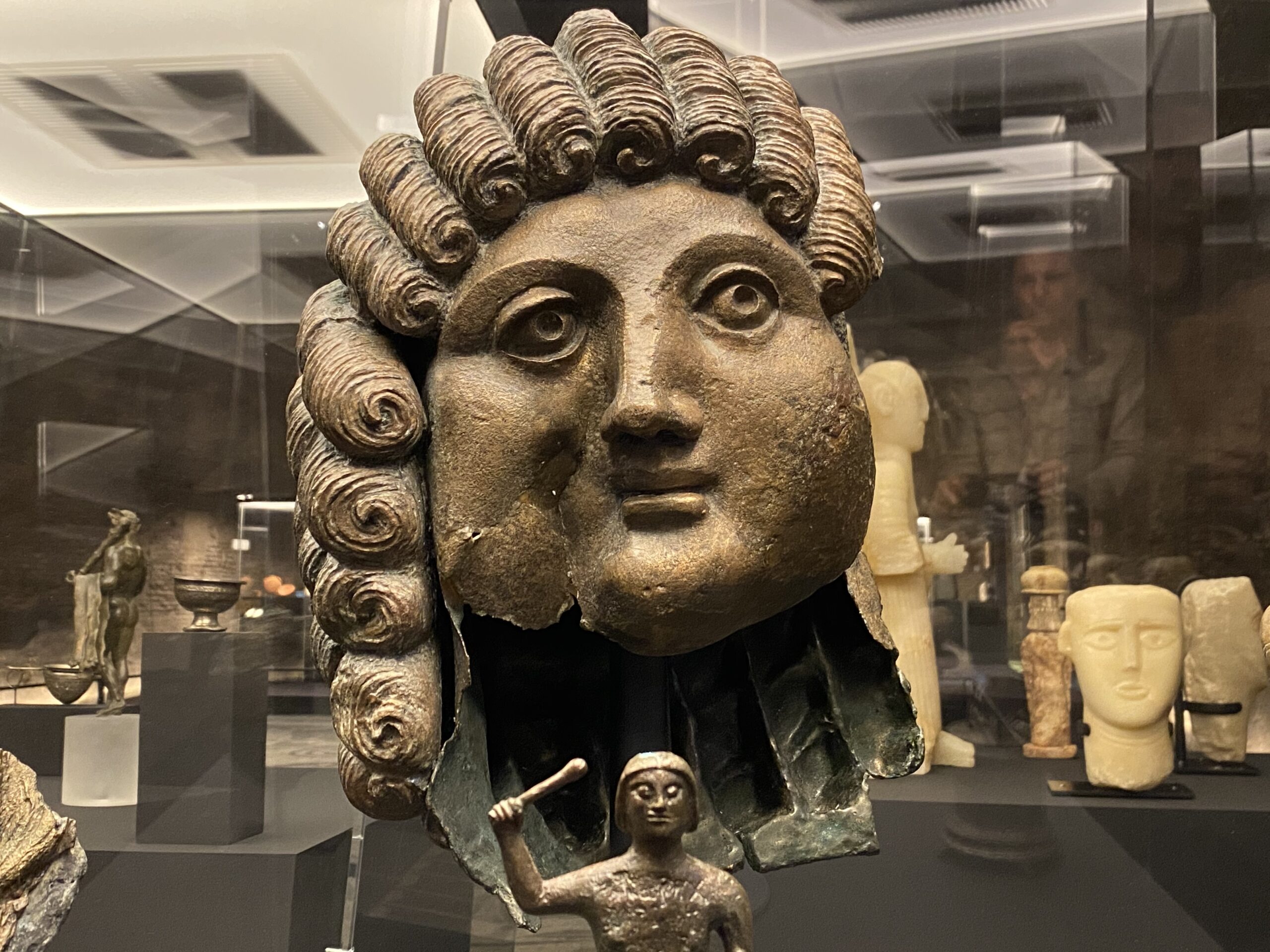Start with our video overview:
From November 2019 to March 2020, Museo Nazionale Romano hosted the travelling exhibition Roads of Arabia, developed by the Saudi Commission for Tourism and National Heritage and the Musee du Louvre, within the Baths of Diocletian. The exhibition, which had previously been shown sixteen times across the globe, centred around the history of Saudi Arabia, with collection pieces ranging from over a million years old to the modern day kingdom. The Baths of Diocletian proved an appropriate location to install the touring exhibition in Rome, considering the similarly multi-layered and far-reaching history of the site.
The first theme of the exhibition concerned the prehistory of southern Arabia, from stone tools dated to 1.3 million years ago to traces of some of the first farming settlements around 10,000 years ago. In terms of the climate and environment, the area that is now Saudi Arabia was more humid and greener during this period, explaining why this area was the cradle of the agricultural revolution: when humans moved from foraging to farming. From this epoch, a series of stone animals dated to 8810 BCE were discovered by a camel herder digging for water in al-Magar as recently as 2010; the horse sculpture may be the most significant, as the depicted bridle marks suggest dating the estimate for the domestication of horses in Western Asia.
As its name suggests, Roads of Arabia addressed diachronic cultural interactions, connecting the Arab Peninsula with the Mediterranean, Western Asia, and beyond. During antiquity, the incense trade was crucial for diverse daily practices from the religious to the hygienic; the incense came from tree resin (particularly frankincense and myrrh) found almost exclusively in the arid territories of southern Arabia. Consequently, a complex trade network of caravan routes connected the area with dominating civilisations such as Mesopotamia, Egypt, Greece and Rome. Evidence of this can be seen in Greco-Roman bronze figurines of Hercules excavated from the prosperous caravan site Qaryat al-Faw, fittingly displayed in an ancient Roman context as part of their 21st century travels. Major centres such as Petra arose with Nabataean constructions of monumental sanctuaries, colossal deity statuary and tombs surrounding cities; under Trajan, these were annexed into the Roman Empire, adding another layer to their complex history and another link to the city of Rome.
The exhibition also detailed the arrival of Islam in the seventh century, when Mecca and Medina gained new spiritual significance, attested by tombstones from al-Ma’la cemetery which demonstrate the number of Muslim pilgrims who settled locally or travelled extensively to complete the Hajj. Caravan routes were thus replaced by pilgrimage as this region became the geographical heart of Islam, a tradition that has continued into modernity. More recent collection pieces include gilded doors donated by the Ottoman Queen Mother for the sanctuary of Kaaba at Mecca in 1630 during reconstruction following flood damage, which remained in use for over 300 years. The emergence of Saudi Arabia as a modern nation-state in the 20th century was evidenced materially through royal belongings and typical artistry. Material cultural heritage was sourced from UNESCO sites and curated to demonstrate the history and culture of this region, exhibited for a short time in the well-suited baths museum built by Diocletian and restored by Michelangelo.
References
- Claridge, “Rome: An Oxford Archaeological Guide”, (Oxford 2010), 391-5; 481-3.
- Alarabiya News, “Story behind the oldest door of Islam’s holy Kaaba”, (2017).
- Asian Art Museum, “Roads of Arabia: Archaeology and History of the Kingdom of Saudi Arabia”, (San Francisco, 2014).
- A. Kilickiran, “The History of the Hajj”, Insight Turkey no. 16, (1998), 133-139.
This content is brought to you by The American Institute for Roman Culture, a 501(C)3 US Non-Profit Organization.
Please support our mission to aid learning and understanding of ancient Rome through free-to-access content by donating today.
Cite This Page
Cite this page as: Darius Arya, The American Institute for Roman Culture, “Roads of Arabia Exhibition 2020 (at Museo delle Terme/Baths of Diocletian)” Ancient Rome Live. Last modified 08/05/2020. https://ancientromelive.org/roads-of-arabia-exhibition-2020-at-museo-delle-terme-baths-of-diocletian/
License
Created by The American Institute of Roman Culture, published on 08/05/2020 under the following license: Creative Commons: Attribution-NonCommercial-ShareAlike. This license lets others remix, tweak, and build upon this content non-commercially, as long as they credit the author and license their new creations under the identical terms. Please note that content linked from this page may have different licensing terms.



